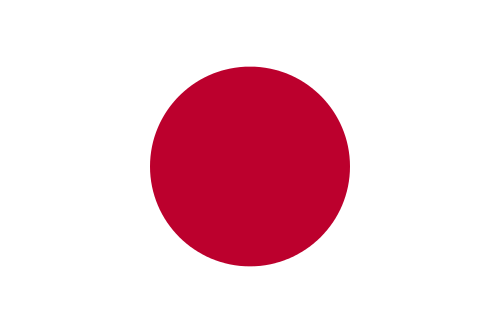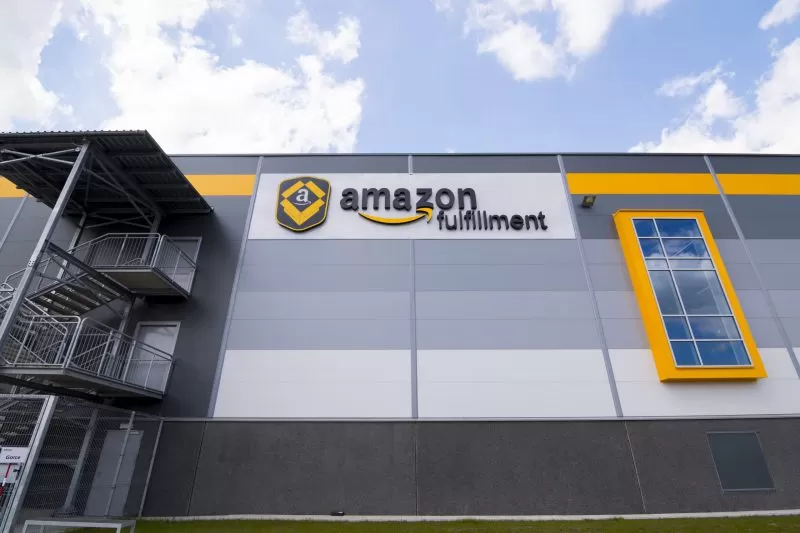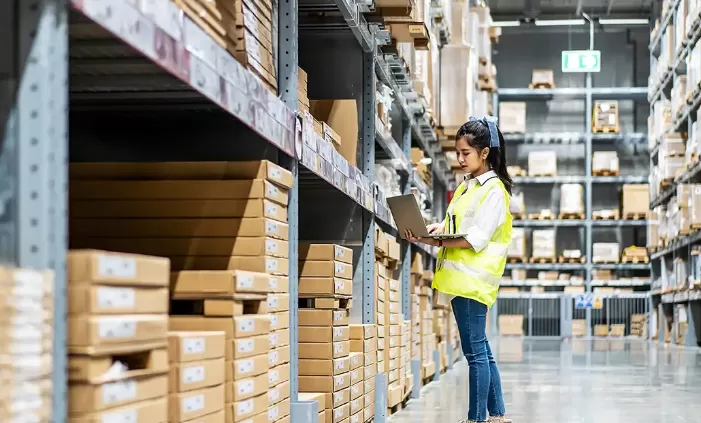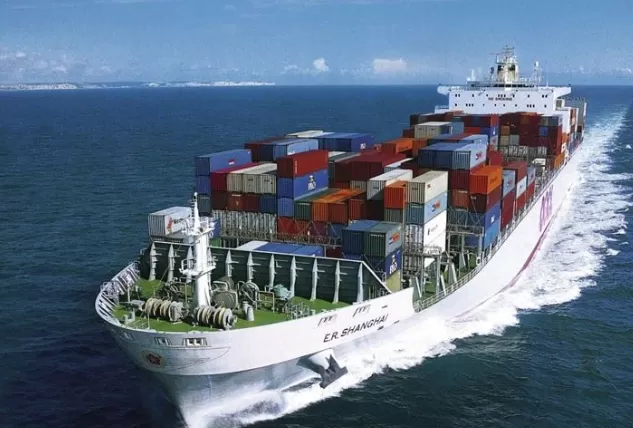If you're reading this, you've likely seen the quotes. The cheap ocean freight rate that seems too good to be true. The all-inclusive air price might have hidden fees. For Amazon FBA sellers shipping from Asia to Vancouver (YVR2, YVR3, YXX2), the real cost isn't just the freight; it's the risk. A single customs delay, a misapplied FBA label, or a missed Amazon appointment can erase your margins.
This guide is different. We operate on the ground in Vancouver and at key ports in China. We'll provide the operational blueprint used by top sellers to ensure your goods move reliably, compliantly, and cost-effectively. This is not generic advice; this is the deep, tactical knowledge you need to succeed.
In the next 10 minutes, you will learn:
How to decode shipping quotes and calculate your true landed cost.
The critical difference between a simple freight forwarder and a true FBA-compliant logistics partner.
A step-by-step breakdown of the door-to-door process, with a special focus on Canada's new CARM system.
A 5-point checklist to vet any Vancouver FBA freight company.
1. The 60-Second Diagnostic: Match Your Shipment to the Right Service
Stop guessing. Use this matrix based on volume, urgency, and complexity to find your starting point.
| Your Shipment Profile |
Recommended Solution |
Why It's the Best Fit |
| Urgent & Small (< 100 kg); samples or critical stock-out |
Expedited Air Freight |
Speed is paramount. Door-to-door in 5-10 days. Ideal for high-value items where inventory cost outweighs freight cost. |
| Balanced & Mid-Volume (1 - 15 CBM); monthly restocks |
LCL Ocean Freight + Final Mile Courier |
The sweet spot for most SMEs. Combines Ocean's low cost with the convenience of courier delivery to Amazon (no appointment needed). |
| High-Volume & Cost-Sensitive (> 15 CBM or Full Container); quarterly launches |
FCL Ocean Freight + Dedicated Trucking |
Lowest cost per unit. Requires planning and can handle Amazon's strict palletized freight appointment system. |
| Complex or High-Risk; requiring pre-reception prep |
LCL/FCL + Vancouver-Based FBA Prep Services |
For items needing inspection, relabeling, or bundling before Amazon. Uses a local warehouse to de-risk the final delivery. |
2. The Vancouver FBA Specialist vs. The Standard Freight Forwarder: Why the Difference Matters
Many companies can move a box. Very few can guarantee its smooth entry into an Amazon fulfillment center. Here’s the distinction:
A standard forwarder focuses on port-to-port or airport-to-airport movement. Their responsibility often ends once customs clears the goods. You are then left to arrange (and pay for) the final trucking, Amazon appointment booking, and ensure all FBA labeling is perfect.
CARM Compliance: They understand the new CBSA CARM platform and can act as your representative, ensuring duties and GST are filed correctly before arrival to avoid holds.
Amazon-Centric Operations: Their warehouse staff are trained on Amazon's specific requirements: FNSKU labeling, poly-bagging, box weight/dimension limits, and pallet building standards (no overhang, specific stretch-wrapping).
Appointment Management: They have relationships with local cartage companies that specialize in Amazon deliveries and understand the complexity of securing and keeping appointment slots.
A Vancouver FBA Specialist acts as your de facto logistics department. Their service is door-to-door (DDP terms are common), and their expertise includes
The Core Question to Ask: "Can you show me your Standard Operating Procedure (SOP) for delivering a palletized shipment to Amazon YVR2?" A true specialist will have one.
3. The End-to-End Playbook: A Step-by-Step Walkthrough from Factory to Amazon Rack
This is the operational detail you won't find elsewhere. Let's break down the LCL ocean freight process, the most common route for growing sellers.
Phase 1: Pre-Shipment Consultation & Booking (The Foundation)
Action: You provide a commercial invoice, packing list, and your Amazon Shipment ID.
Our Role: We conduct a pre-flight check, verifying HS codes for accurate duty estimation, reviewing FBA labels in your shipment plan, and providing a DDP (Delivered Duty Paid) quote that includes all costs. No surprises.
Phase 2: Origin Operations in China (Where Control Begins)
Action: Your supplier prepares goods.
Our Role: We arrange pickup from the factory and transport to our consolidation warehouse in Shenzhen or Ningbo. Here, we perform a Pre-Loading Cargo Check (PLCC): verifying carton counts, label placement, and pallet stability. We send you photos for confirmation before the container is sealed.
Phase 3: Ocean Transit & Documentation (The Nervous Wait)
Action: You approve the bill of lading draft.
Our Role: We book space on a vessel sailing directly to Vancouver (or sometimes via Prince Rupert for speed). We provide you with the vessel name and voyage number for real-time tracking. Critically, we pre-submit all customs documentation to our Canadian brokerage team.
freight forwarding
Get real-time quotes for
Get Quotes
Phase 4: Canada Customs Clearance & CARM (The Critical Gateway)
Action: You provide any additional information requested.
Our Role: This is where expertise pays off. As of 2025, CARM is fully implemented. As your broker, we log into the CARM portal, file the B3 customs entry, and calculate and pay the GST and any applicable duties on your behalf. For non-resident importers, we can act as your legal representative, preventing costly delays at the border.
Phase 5: Vancouver Deconsolidation & Final Mile (The Last Yard)
Action: You monitor the "Out for Delivery" notification.
Our Role: The container arrives at the Port of Vancouver and is trucked to our nearby deconsolidation warehouse. Your shipment is separated, and depending on the service:
For LCL + Courier: Pallets are handed to a partner like UPS Freight or Day & Ross for appointment-free delivery to Amazon.
For FCL + Trucking: Full pallets are loaded onto a dedicated truck that we have pre-scheduled an appointment with Amazon for.
4. Demystifying Your Landed Cost: A Transparent LCL Calculation
Let's move beyond vague promises. Here’s a real-world cost breakdown for a typical shipment.
Scenario: Shipping 3 CBM / 500 kg of household goods from Ningbo, China, to Amazon YVR2. Product Value: $8,000 USD.
| Cost Component |
Calculation |
Estimated Cost (USD) |
| Ocean Freight (LCL) |
$85 per CBM |
$255 |
| Origin Charges (THC, Docs, Admin) |
Fixed Fee |
$120 |
| CIF Value |
Product + Freight + Origin |
$8,375 |
| Insurance |
0.3% of CIF Value |
~$25 |
| Duty |
Assume 0% (varies by HS code) |
$0 |
| GST |
5% of CIF Value |
~$419 |
| Customs Brokerage |
CARM Filing Fee |
$100 |
| Destination Charges |
Deconsolidation, Handling |
$150 |
| Final Mile Delivery |
Courier to Amazon YVR2 |
$250 |
| FBA Prep Service |
Labeling & Palletizing (if needed) |
$75 |
| Total Landed Cost (DDP) |
Sum of All Above |
~$1,394 |
Key Insight: Notice that the ocean freight is only a fraction of the total. The GST, destination, and delivery fees are significant. A professional quote will list every line item like this.
5. The 5-Point Vendor Vetting Checklist: Don't Sign Until You Get "Yes"
Before you commit, ask these questions. How a company answers will tell you everything.
"Can I have your CBSA-approved business number and your CARM portal security access details?"
Why it matters: This verifies they are a licensed customs broker, not just a transporter. This is non-negotiable for smooth clearance.
"Where is your consolidation warehouse in China, and can you provide a photo of my goods before sailing?"
Why it matters: Proves they have physical control over your cargo and perform essential pre-load checks.
"Do you have a standard operating procedure for Amazon pallet building and appointment scheduling?"
Why it matters: Reveals their FBA-specific expertise. A generic trucker might get your shipment rejected for a simple pallet overhang.
"Is your quoted price DDP, and can you provide a line-item breakdown including all destination fees?"
Why it matters: It forces transparency. You avoid hidden terminal fees, fuel surcharges, and "disbursement" fees later.
"Can you put me in touch with a current client with a similar shipment profile?"
Why it matters: The ultimate test. A confident partner will have references ready.
freight forwarding
Get real-time quotes for
Get Quotes
Frequently Asked Questions (FAQ)
Q1: What are your standard payment terms? Do you offer credit for new clients?
A: We typically ask for a 50% deposit to lock in your shipping space, with the balance due before your cargo arrives at the destination port. We know cash flow matters—once we’ve successfully handled a few shipments, established businesses can apply for net-15 or net-30 terms after completing a credit application and providing references.
Q2: I’m shipping products with lithium batteries. What’s needed for documentation?
A: Battery shipments require specific expertise. You’ll need to provide a UN38.3 Test Summary and MSDS from the manufacturer. We take care of the Dangerous Goods Declaration for air freight and ensure all packaging is certified and properly marked. Keep in mind: failing to declare batteries correctly can lead to major fines and even having your cargo destroyed.
Q3: How do you handle Peak Season Surcharges (PSS) from shipping lines?
A: Honestly and transparently. While we lock in your base ocean or air rate at the time of booking, if carriers impose a PSS (like around Chinese New Year or Q4), we pass those fees through at cost—no markup. We’ll always send you the official carrier notice so you see exactly what’s being charged and why.
Q4: Can I check my goods at your Vancouver warehouse before they ship to Amazon?
A: Definitely. We encourage quality checks. Just schedule an appointment to come by our facility, inspect your products, and give the green light before anything heads to Amazon. Standard access and handling fees will apply, but the peace of mind is worth it.
Q5: What’s your process if there’s damage or missing items when my container is opened?
A: As soon as we deconsolidate a container, our team does a visual check and notes any damage, shortages, or signs of moisture on the Delivery Receipt. We send you that OS&D report within 24 hours—so we can start the claims process with the ocean carrier immediately while everything is fresh and documented.
Q6: How long can my goods stay at your China warehouse before shipping?
A: We include 5 free days for consolidation at our Shenzhen or Ningbo hub. After that, storage fees apply per pallet or CBM per day. This keeps things moving efficiently and avoids one delayed supplier slowing down your entire container.
Q7: Can you help me classify my products with the right HS codes?
A: Yes, and we strongly recommend it. Our customs brokers offer a classification service—we review your product’s makeup and use to recommend the most accurate and cost-effective HS code. Getting this right from the start helps you avoid headaches and penalties with CBSA down the road.
Q8: What happens if the shipping line causes a major delay?
A: We wish we could guarantee timelines, but ocean carriers only commit to “reasonable dispatch.” If there’s a delay, we stay on top of the tracking, push the carrier for updates, and look into rerouting options if it’s serious. That said, financial compensation is usually limited unless the delay violates the carrier’s contract.
Q9: My supplier only offers EXW (Ex-Works). Can you still handle the shipment?
A: Of course. EXW is common. In that case, we’ll coordinate and pay for local pickup from your supplier’s door, manage export formalities in China, and handle the entire international move. You’ll get one clean invoice that breaks down all the origin charges plus freight.
Q10: What do I do with inventory that Amazon fully rejects?
A: We can help with that. For goods stuck at our Vancouver warehouse, you can choose to: 1) Dispose of them (we’ll provide a certificate of destruction), 2) Ship them back to your supplier, or 3) We can refer you to local liquidators who might buy the inventory at a reduced rate.
Q11: Will I work with the same people each time I ship?
A: Absolutely. You’ll have a dedicated account manager and an operations specialist assigned to you. That means you always have a go-to person who knows your business—no repeating yourself or getting passed around.
Q12: How early should I book to make sure I get on my chosen vessel?
A: To be safe, aim to book 7-10 days before your target departure date. During peak season (August through January), better to plan 2-3 weeks out. This gives us enough time to collect your goods, consolidate if needed, and get all the paperwork ready before the carrier’s cutoff.

 EN
EN
 FR
FR
 ES
ES
 JA
JA
 PT
PT
 RU
RU
 AR
AR







